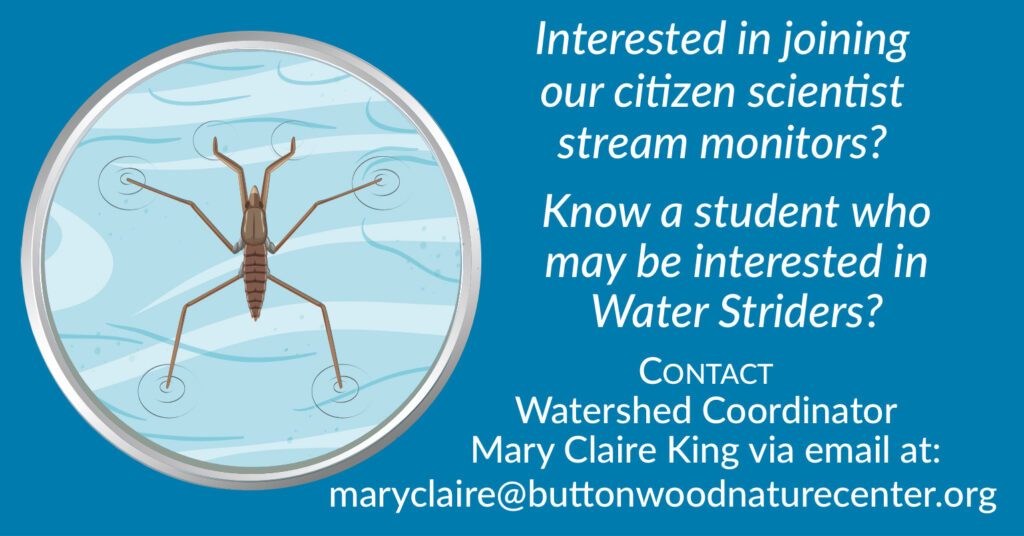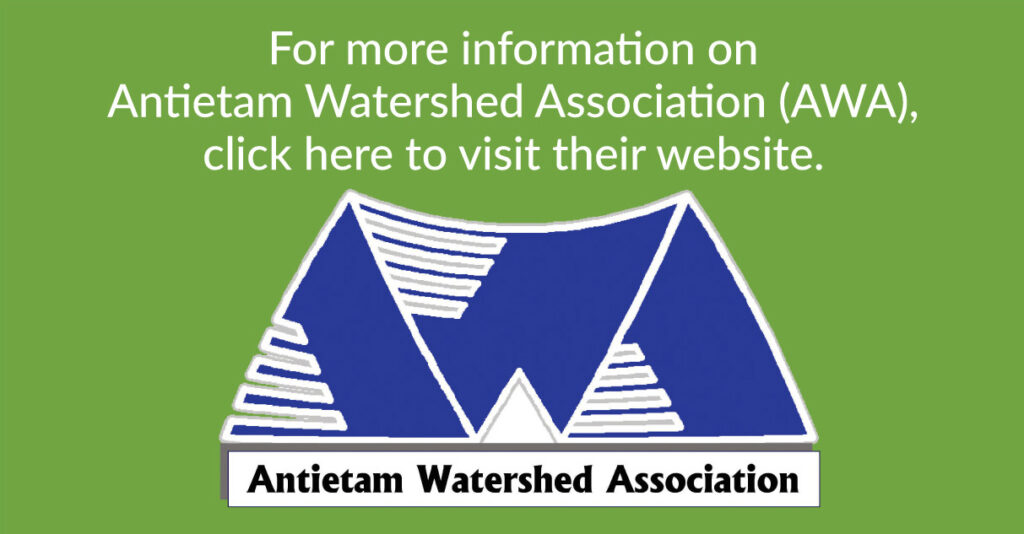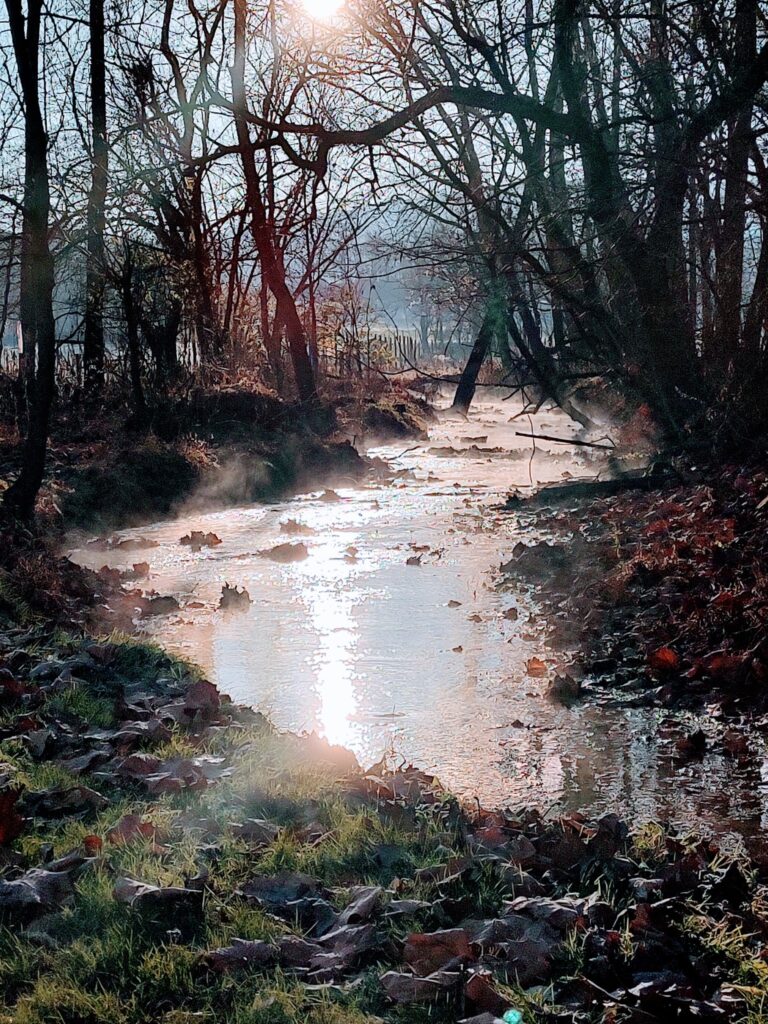 For many years, Buttonwood Nature Center, home of The Institute has participated in various aspects of watershed science, eventually expanding the initiative into a comprehensive plan for local stream study.
For many years, Buttonwood Nature Center, home of The Institute has participated in various aspects of watershed science, eventually expanding the initiative into a comprehensive plan for local stream study.
Three key groups operate under our Watershed Science umbrella, each contributing to the study and care of area streams and our watershed:
A.) Stream Monitoring Program, in partnership with the Antietam Watershed Association (AWA)
B.) Internships—high school and college level student interns
C.) Water Striders—middle and high school students
Led by Watershed Science Coordinator and Environmental Educator, Mary Claire King, these three groups and their activities provide data and other information that helps support local stream health.
AWA STREAM MONITORING PROGRAM
AWA’s Stream Monitoring Program was created to help keep tabs on our local streams. Headquartered at Buttonwood, the program provides training and support for ‘citizen scientists’ from our community. These dedicated volunteers, along with university interns venture out monthly to specific stream sampling sites along both the East and West branches of Antietam Creek.
Working in partnership with AWA, Buttonwood/Institute crews collect water samples from 28 testing sites along the East and West branches of the Antietam Creek. Each site is sampled at least 8 times per year, with a goal of visiting each sample site once a month—a total of 336 sampling trips a year!
With the help of our citizen scientists, the samples are tested following protocols established by the Alliance for Aquatic Resource Monitoring (ALLARM), based at Dickinson College in Carlisle, Pa. ALLARM testing includes standards for pH, alkalinity, turbidity, dissolved oxygen, phosphates, and nitrates, all of which are indicators of stream health.
Interested in learning more? Download ALLARM’s stream monitoring manual here.
The testing sites along the West branch of the Antietam are primarily in valleys or near farmlands, and show higher levels of nitrates and phosphates, an indicator of added nutrient input from fertilizers and animal waste.
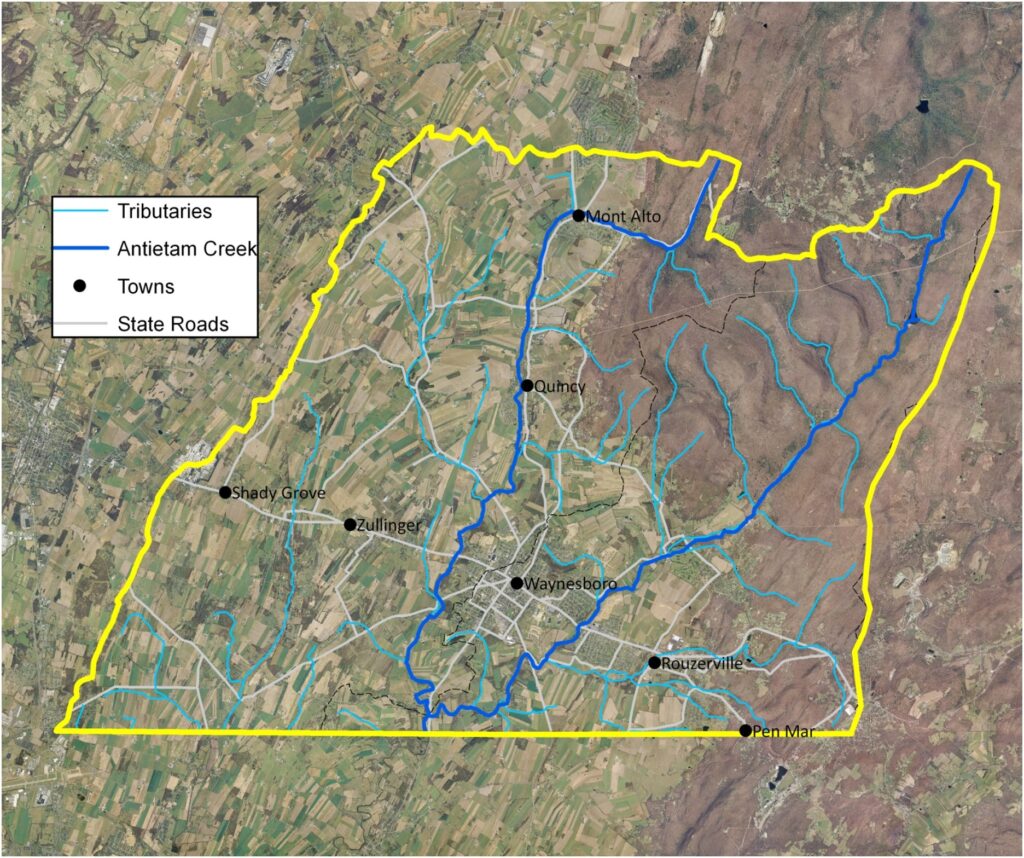
What do we do with the data and why is it important?
The data collected from this program is entered first into an Institute-established database, then into the regional Chesapeake Data Explorer. There are many reasons to collect this data.
1) Antietam Creek is part of the headwaters of the Chesapeake Bay Watershed. The water from the creek flows into the Chesapeake Bay and can influence the water quality of the Bay, which is an invaluable resource for all that live within the watershed.
2) We are in a targeted area of development. Land use and development affects stream quality. Added nutrients like phosphates and nitrates can cause eutrophication, the excessive nutrient enrichment of water, leading to algal blooms and ecological imbalance. For more information about eutrophication, visit this site.
3) We can watch for change over time. Data from the sampling sites has been collected for the past 17 years. Looking back through the data can tell us how well restoration projects in the area are doing. The data can also help the AWA to focus on areas within the Watershed that may benefit from restoration efforts. Similarly, when water quality goes up, we know that we have made a difference through restoration efforts.
INTERNSHIPS
Internships at high school and college levels are offered at Buttonwood year-round, including both undergraduate- and graduate-level internships in history, environmental and watershed science studies, and other related fields.

Many of our interns work on collecting samples and data from the 28 sampling sites of the AWA Stream Monitoring Program. They collect the samples, run the chemical tests, and record the data in the databases.
Depending on the type of internship, the interns will work on a major project during their time with the Institute. This may be based on the data they collect, on data from years past, or on something completely original.
The goal of each internship is to give the student an opportunity to test their interest in and aptitude for a career in watershed science, environmental education, or nonprofit organizations, and to develop skills and techniques directly applicable to their career path.
WATER STRIDERS
A water strider is an insect that skims the surface of pond and stream water for food. Their feet hold a delicate balance on the water using surface tension to stay afloat. Like their namesake, Buttonwood’s Water Striders ‘skim the surface’ of watershed science to gain an appreciation and understanding of the greater connection between themselves and their environment.
The after-school program runs year-round, and offers local youth the opportunity to “wade into” creek study and have fun, too. Under the supervision of Buttonwood staff, Striders meet once a month to conduct water quality monitoring tests as part of the Antietam Watershed Association’s stream monitoring program.
Striders also check out macroinvertebrates (‘water critters’), take field trips, and enjoy the company of their fellow Striders. Each spring, the group prepares a display table for our annual Earth Celebration Day in April. Striders engage the public as they explain their exhibit and help people become “watershed aware for watershed care.” The program allows students to develop critical thinking skills, understand scientific best practices, and expand their connection to the natural environment and their place within it.
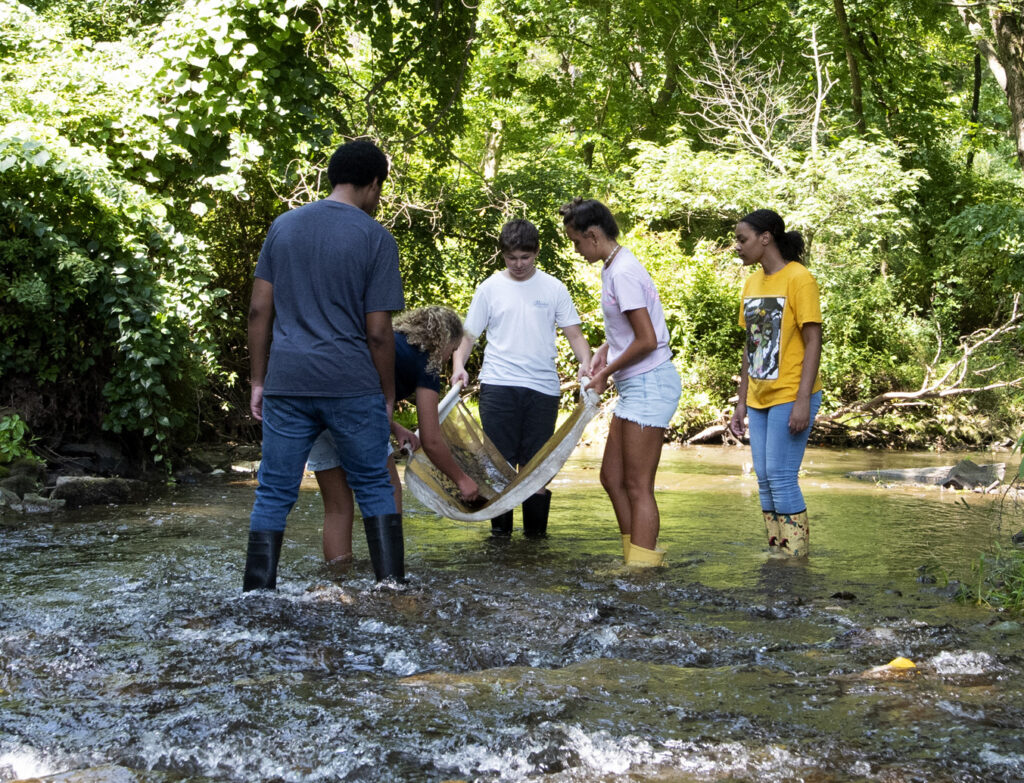
What is a macroinvertebrate?
Aquatic macroinvertebrates are small insects that live in freshwater streams. The presence or absence of certain macroinvertebrates can be an indicator of stream health, as some can only live in very specific conditions. If those macros aren’t present, the stream might need some restoration help.
Why is Watershed Science Important?
The reason that we conduct activities with the AWA stream monitoring program, internships, and Water Striders is to support local stream health today and encourage stewardship by others who will contribute to continued health into the future. The AWA monitoring program allows us to see the current state of the watershed, which can help the AWA make informed decisions about where best to focus restoration efforts. In addition, the Water Striders and internship programs provide opportunities for Buttonwood Nature Center to work with the youth of the region and encourage long-term stewardship that will protect the health of the watershed and the people that reside within it for years to come. These activities directly support the mission of Buttonwood Nature Center—guiding the people of the Cumberland Valley region to become stewards of their natural and cultural worlds.

